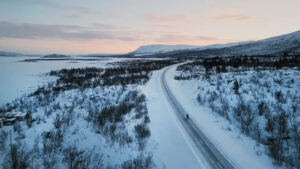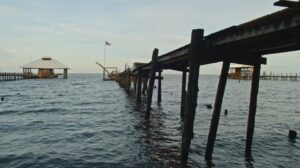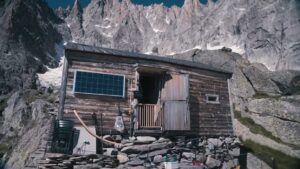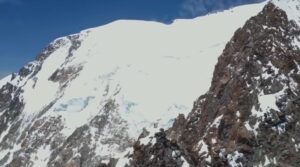The Victorian era saw wave after wave of talented young European explorers vanish into the Arctic, the Amazon, and the Congo in search of trade routes, treasure, or fame.
But even by the standards of the day, Salomon August Andree’s 1897 scheme to fly a balloon over the North Pole was considered foolhardy. With good reason — the three-man team vanished shortly after setting out, and their bodies weren’t recovered until 30 years later.

Salomon August Andree. Photo: Screenshot
The doomed expedition is the subject of a short documentary by the Curious World YouTube channel. Using extensive research and archival photographs, the filmmaker details the expedition from its genesis in the late 1800s to its inevitable conclusion decades later.
With minimal music and somewhat understated narration, the result is reminiscent of the type of documentary Ken Burns made famous. There’s a lot of panning over photographs and stock footage. But if the filmmaking technique is somewhat lacking in drama, the details of the expedition compensate. For one thing, there’s a growing sense of dread as you realize the three explorers never really had a shot at coming home alive.

The Andree team after they crashed. Photo: Screenshot
Too much optimism, too little experience
The trouble began shortly after Andree received funding for his expedition from the Royal Swedish Academy, Alfred Nobel, and the King of Sweden and Norway. The optimistic engineer convinced his funders by pitching his plan to steer his balloon (the Eagle) using three heavy ropes that dragged on the ground.
But modern balloonists contend that there’s no way the design worked. They speculate that Andree deceived himself through a combination of toxic optimism and fatal inexperience.

The expedition embarkation point with the balloon under assembly. Photo: Screenshot
On top of that, the balloon Andree designed was shipped from its factory in France to the embarkation point in Svalbard without being tested first. When Andree and his team inflated it for the first time, they realized that it leaked highly explosive hydrogen at far greater rates than he’d originally planned.
If your skin is already starting to crawl, just wait. Andree speculated that the trip across the pole would take somewhere around two weeks. The expedition was provisioned with that in mind, and caches were set up strategically in case of disaster. But the caches were spread out across the wide arctic expanse, and the team didn’t have clothing or supplies to overwinter in the Arctic if they crashed.
Which they did.
Two days after setting out.

Not great. Photo: Screenshot
Saved by cold feet
In one of the most fortuitous instances of cold feet in the history of exploration, one of Andree’s original crew members bailed on the trip after realizing the balloon leaked like a sieve. Andree had no trouble replacing him, though, and soon enough, the fully staffed team was ready to depart.
The last anyone saw of the three men (alive), they were struggling to keep their balloon afloat mere moments after launching. Witnesses recall the drag-rope system pulling the balloon toward the water. They also noted how much ballast the crew threw over the side to keep the Eagle in the sky.

The steering ropes drag the ‘Eagle’ toward the water shortly after launching.
I won’t spoil what happened between that moment and the discovery of the bodies 30 years later. That’s why you should watch the film. But suffice it to say that the overwhelming optimism that characterized the Age of Exploration needed hard skills and experience to back it up.
Otherwise, you just end up with bodies.

An expedition journal recovered years later. Photo: Screenshot
“No one has lost courage. With such comrades, one should be able to manage under, I may say, any circumstances,” Andree penned in his journal in the months after becoming stranded.
It was the last thing he ever wrote.






